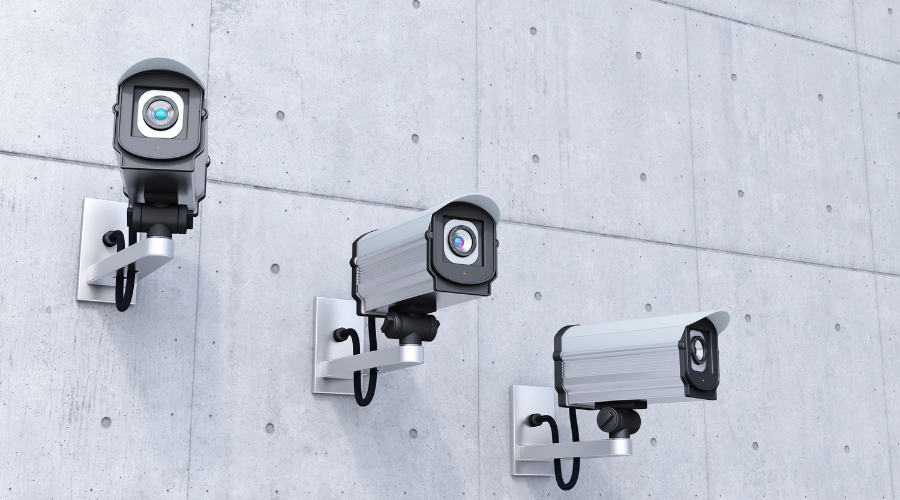The Top 7 Factors to Consider When Planning a Video Camera Refresh

Multiple Reasons to Refresh Video Camera Equipment
Sometimes, organizations that have invested in video surveillance (CCTV) networks need to update their camera equipment. Their current infrastructure may be obsolete or nearing the end of its life, or they may want to take advantage of features and functionalities available with newer camera technologies by installing new cameras rather than repairing old cameras, or simply to improve the image quality. Camera investments might even be driven by local, state, or federal regulations, guiding the video storage or investigative capabilities of the organization’s direction at any given time. For many businesses, it is a matter of adapting to changing business needs, such as security investigators requiring higher quality footage to review incidents, or IT staff requiring video systems that can more seamlessly integrate with other core technologies and data resources.
Many organizations want to be able to leverage complementary “smart” technologies, such as video content analytics software, which identifies, classifies, and indexes objects in surveillance video to make the extracted and categorized data searchable, actionable, and quantifiable. By enabling video search, alerting, and data visualization based on extensive filter combinations, video analysis solutions empower organizations to leverage their video surveillance systems for many purposes beyond physical security, such as planning, marketing, merchandizing, and even operations.
The costs of upgrading or refreshing a video surveillance camera network can vary greatly, depending on the size of the system, which hardware and components are chosen, and whether the end user needs to update their infrastructure as well. There are cheap and easy ways to upgrade, but – often and especially if an organization is considering a future investment in video analytics technologies – it makes sense to do a comprehensive upgrade that offers more value and functionality and enables additional expansion of camera networks and solutions in the future. Here are some of the factors to consider:
- Camera resolution: When upgrading cameras, resolution is a major consideration: for more advanced analysis, a camera is not very useful if it does not have enough resolution to enable the identification of key details, such as a human face or a license plate. High-resolution video is enabling more sophisticated and accurate video search and filtering, as well as driving the use of video metadata for object identification and analysis, so users can draw intelligence about trends in video or trigger real-time, rule-based alerts.
- Storage needs: Organizations should also factor in the cost of the hardware that supports next generation cameras. Typically, hardware costs are a barrier to mass market adoption of higher resolution cameras, but it is an evolution that is likely to change in the future.Storage needs, in general, depend on many factors, such as the frame rate, bit rate, and length of time needed to store video. Another consideration is how much storage is required to ensure that no important event or behavior goes unrecorded. Figure out retention and storage for what you need when the cameras are recording, and bear in mind that higher resolution cameras take up more disk space for each recording frame of video.
- Avoid blind spots: Be sure to acquire and position cameras to give you better coverage of the areas you need to monitor as cameras, lenses, and installations vary. Fortunately, wide dynamic range is a standard feature in today’s cameras, which was not the case with older cameras, and a wide dynamic range sensor makes more objects and people visible for users.
- Camera locations: Typically, replacing cameras involves adding new cameras to fill in any gaps in the surveillance coverage. In such cases, the owners will add cameras for areas where they want to capture more footage and run more analytics, such as entrances, exits, areas where people congregate, perimeters, and parking lots. If an organization is considering using face recognition at the entrance of a building, for instance, the camera should be positioned optimally for that analytic capability. Generally speaking, if an organization is testing or implementing video analytics, they may be able to reangle and reposition camera views to improve the metrics.
- Durability: Sometimes cameras are placed in challenging conditions, such as in a manufacturing plant or outdoors. Cameras and cables may be subjected to wildlife damage, extreme temperatures, or sun light. Look for cameras with physical components that are built to withstand the challenges of the environments where they will be placed.
- Replace or add cables: Organizations need to understand if they must replace or add cables; these factors depend on building size and location. You can figure out these factors in advance by estimating camera placement.
- Future-proof the system: It is important to purchase camera systems that can work at higher resolutions and complement existing infrastructure yet allow operators the flexibility to upgrade different aspects of the system as needed in the future.
Refreshing cameras may cost time and money, but it is also an opportunity to get more value from a video surveillance system and avoid the costs of maintaining an older system. In addition, an upgraded system may offer advantages that deliver a good return on the upgrade investment, not only in the quality of real-time monitoring and archived footage, but the ability to integrate the cameras with other technologies.
Signup to receive a monthly blog digest.